In classic Chinese, three means many.That is really good point. not 3 and also not teaching and this is just game then why use three teaching? maybe Far east teachings will be better than three teaching for east asian religion.
- 2
In classic Chinese, three means many.That is really good point. not 3 and also not teaching and this is just game then why use three teaching? maybe Far east teachings will be better than three teaching for east asian religion.
I look at religion mechanically from the pop level (which is where I get things like splitting Christianity on rite instead of communion), which leads me to ask the question: what are the lines that someone in this area in the world would talk to someone else and think "this person believes in something that isn't what I believe in?"
Those are the lines that must be drawn, and the lines that matter, because those are the lines that the game is applying things like religious conversion and the like to.
I'm phrasing this as a leading question because I genuinely have no idea how it'd apply to this region of the world.
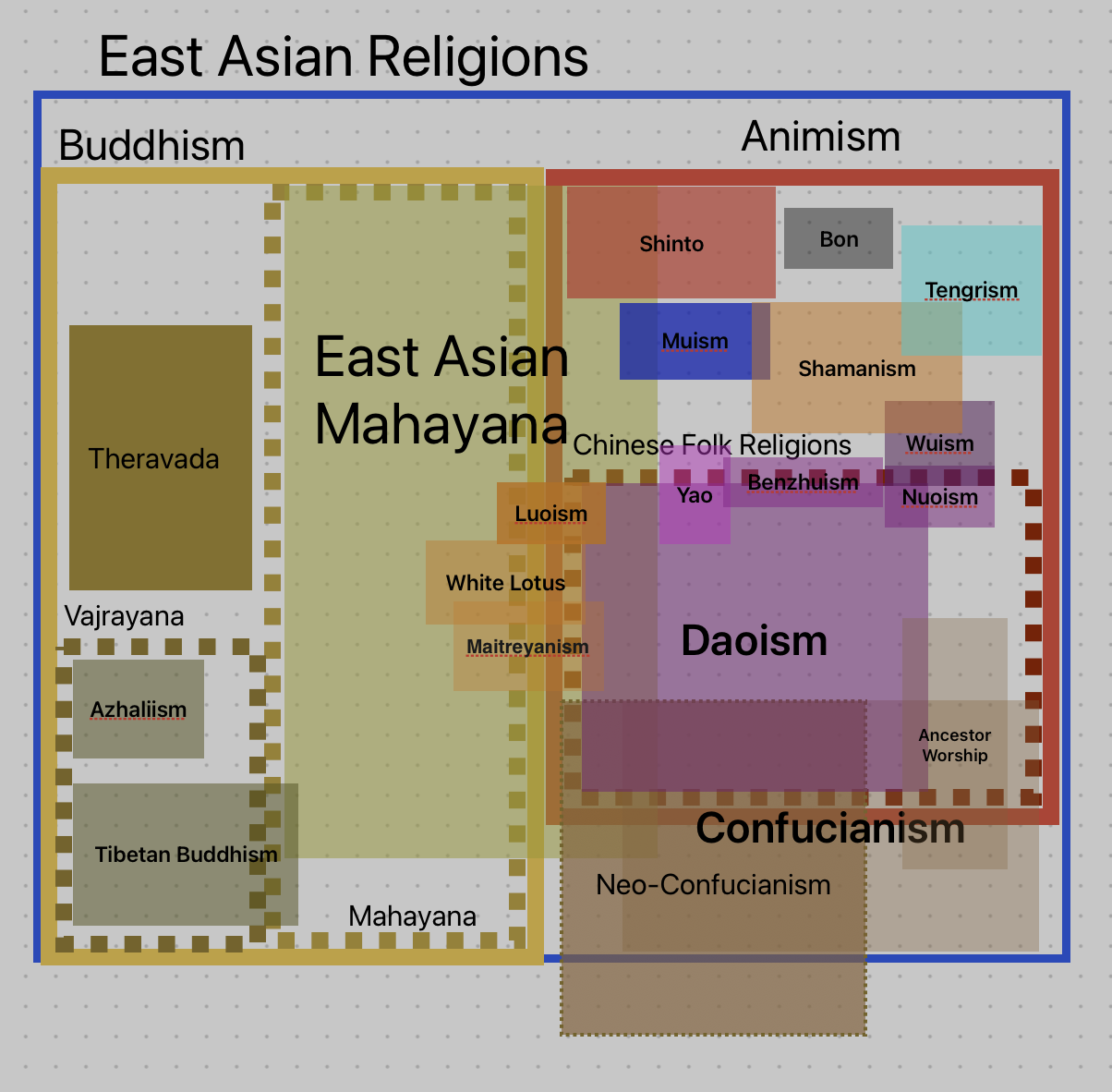
My only criticism of this mod is that it's overdone.My opinion of what really would kinda work is stated with the mod I participated in making for EU4. I largely designed how the Confucianism is branched in that mod. Although later last year I partially retired myself for work reasons (and lack of energy, since I was one of 2, relatively, major devs since 2018).
To those of you never play or not able to play due to localisation problem (I did try enligh-lisation it since I have been living in UK for 8+ yrs, but I failed due to the text size and the laziness), my answer is to split Confucianism in three: Lixueism (the Cheng–Zhu school), Yangmingism (just Yangmingism) and Jingxueism (Philology or Exegesis). Each referring to specific branches of Confucianism, and were ideological drives to policies and moral codes practiced by people (from court to countryside) at that time.
The only addition, based on my idea of how things would go, is making Confucianism and its variety as "upper class religion" while making "Chinese/East Asian Paganism" or some representation of it the "folks' religion". Taoism, Mahayana Buddism would be as the same tier as the "folks' religion". Moreover, Shinto in Japan, back in the days of Shungunate, is more or less a "folks' religion", while noble society closely follows Mahayana Buddism.
But, back in real world, as I stated in other threads, the devs have been openly down-playing religion in this version of the game, based on what they said back in their dev-diaries. So, idk, this thread might be a "lost cause" already.
ps. for Sanjiao, no, I don't think that's a good phracing. Too vague and there are dozen other reasons I can think of. I'd rather just have Confucianism.
View attachment 1298990
I think of East Asian "religions". Mahayana bridges Buddhism and Animism in East Asia, while other Buddhist traditions are distinct from those in the different systems. It is clear that the pairs from the two systems existed in East Asia
Generally speaking, Mahayana is considered Buddhism, though its connection with the Animism system is predominant. However, it remains uncertain where Mahayana sits; I will follow the general rule to place Mahayana on the Buddhism side of the line.
- Tibetan Buddhism in Tibet - Bon
- Tibetan Buddhism in Mongolia - Tengrism
- Tibetan Buddhism in Manchuria - Shamanism
- Azhaliism - Benzhuism
- Japanese Mahayana - Shinto
- Korean Mahayana - Neo-Confucianism
- Chinese Mahayana - Neo-Confucianism & Daoism
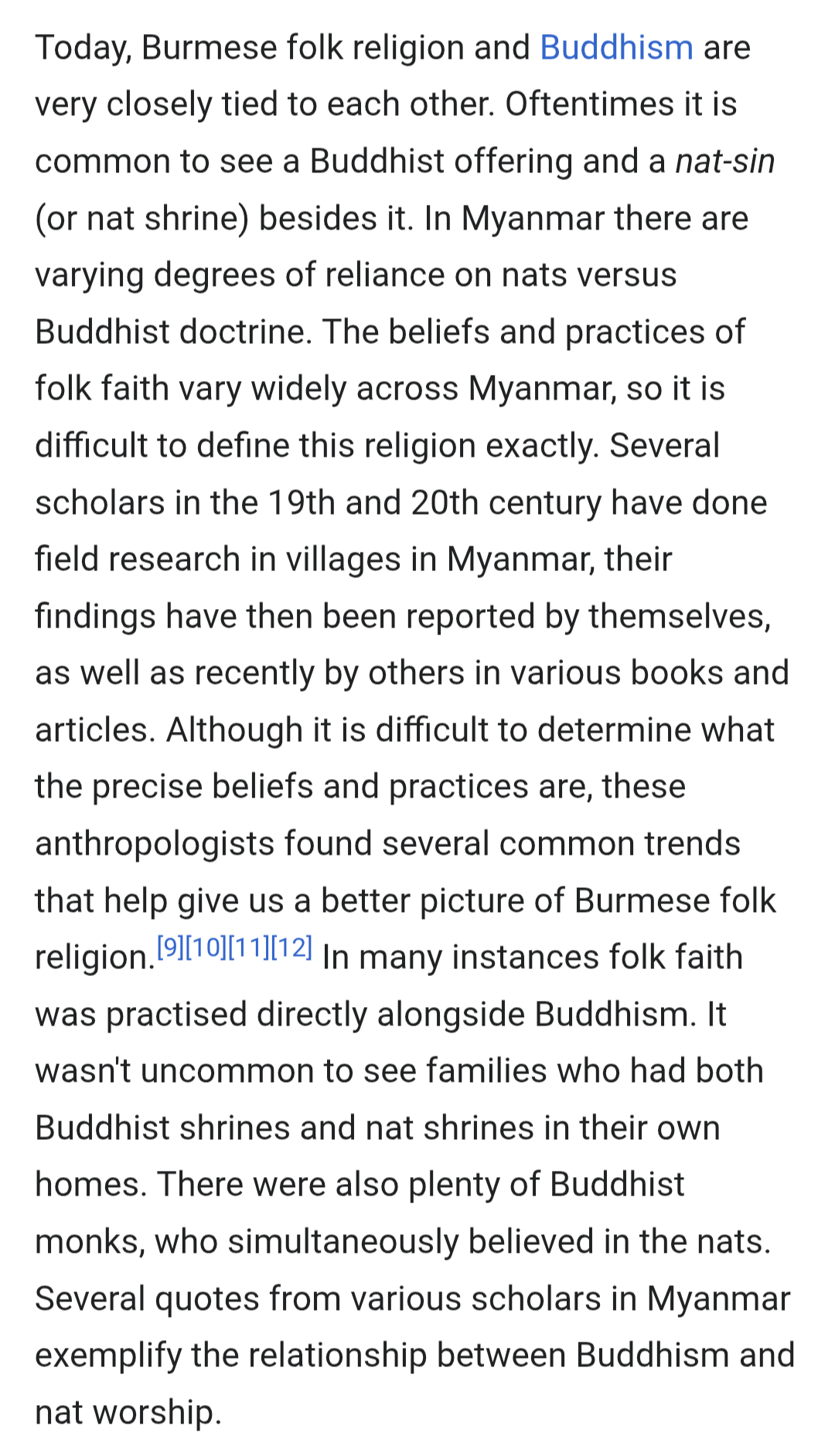
| 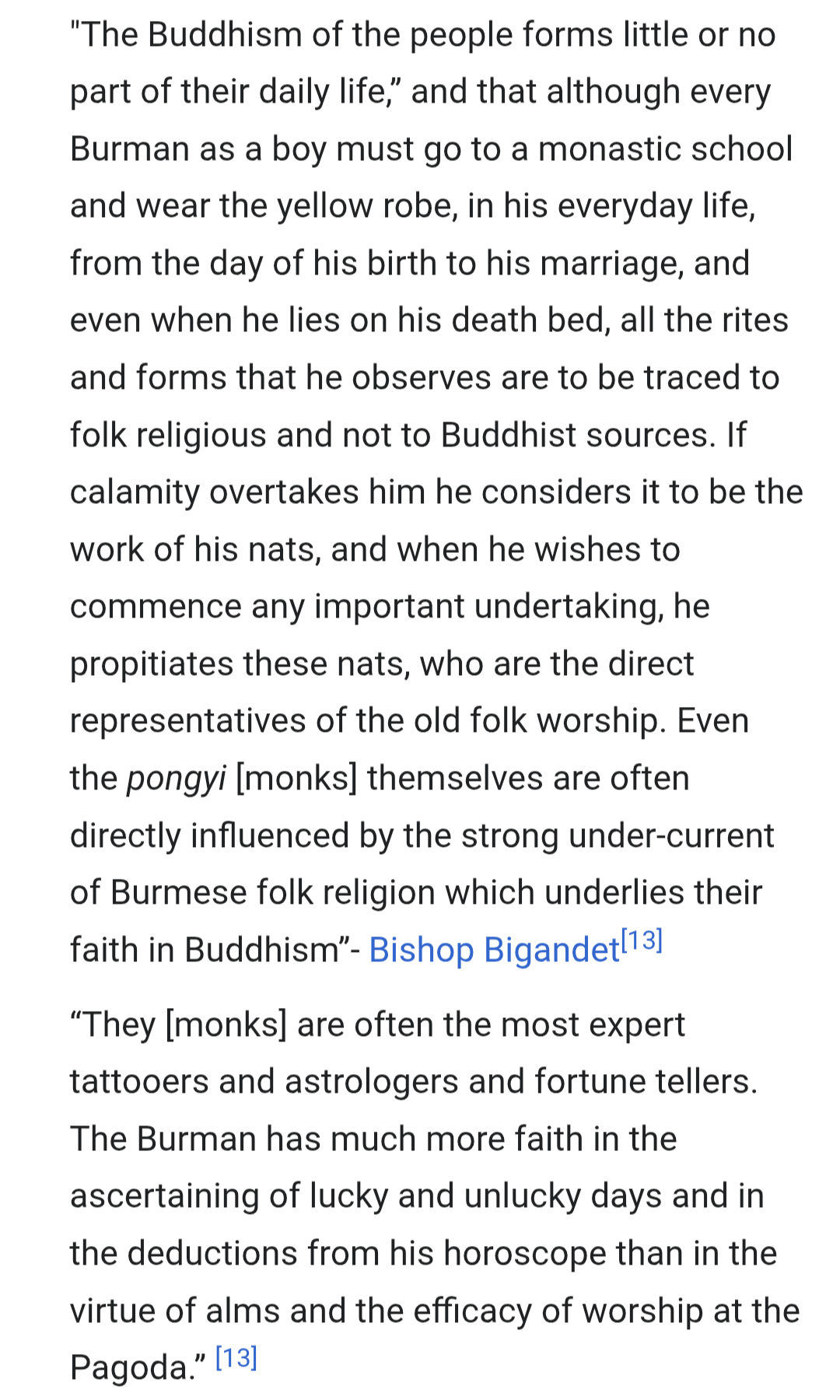
|
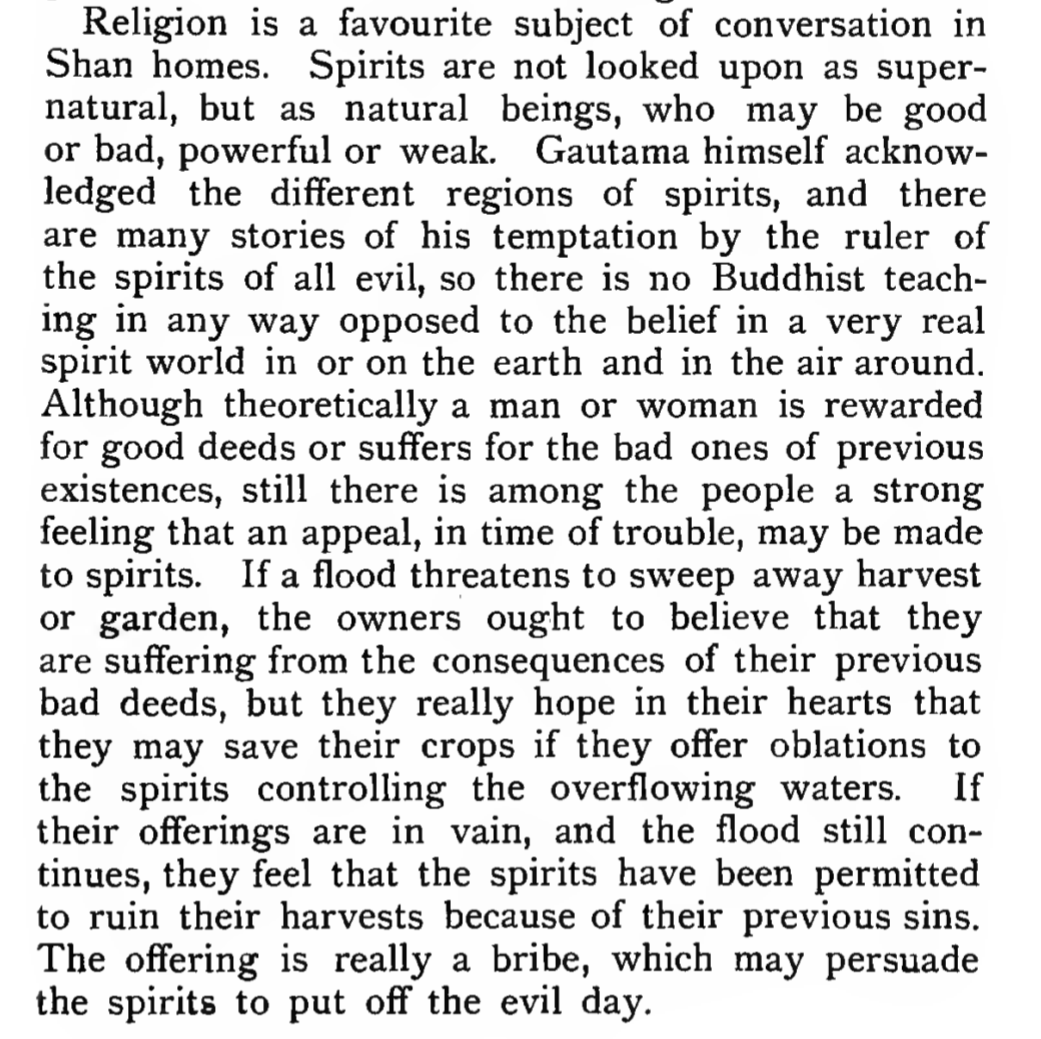
Well, the separation will make sense in many contents, particularly the struggles between native animism and Buddhism.I would say that this is also true for Theravada populations.
While modern Theravada countries identify themselves as >90% Buddhist, the presence of local animist or folk religious beliefs are just as common as found in East Asia.
For example, taking a glance at a description of Burmese religion, it reads incredibly similarly to the type of description you would see of Chinese or Japanese religion:
Even in local folk religions, such as Satsana Phi (Tai folk religion), often regarded as separate "non-Buddhist" beliefs, there is a heavy influence of Buddhist ideals, festivals, or folklore. In countries such as Thailand, Cambodia, and pre-Islamic Indonesia, there is also an especially heavy influence of Hinduism into local beliefs.
I think the reason Buddhism was able to coexist with and integrate into various cultures and folk religions was summarized well by Leslie Milne in her book Shans at Home:
View attachment 1305335
In game, I think there should be a consistency between all the Buddhist regions. If East Asia has representation of syncretism then so should Southeast Asia. Additionally, one important factor needs to be consideredn - Buddhism was more influential in some regions compared to others, favoured by some governments and disliked by others, and all of this could change.
When only allowing for a single religion which represents syncretic populations, you have two options for a consistent view:
1. Local beliefs or polytheism as the primary religion in each country. "Shintoism" in Japan, "Shenism" in China, "Natism" in Burma, "Hinduism" in Cambodia and Indonesia. Buddhism would then be represented through other means, perhaps as an International Organization.
2. Buddhism as the primary religion in each country. In this method, local beliefs can be represented through country or religion mechanics, you could have a slider or societal value denoting the influence of "Local beliefs vs Orthodox Buddhist beliefs" in a country. Differences between local beliefs in each country would be indicated by the culture of a pop.
In my opinion, I find both of these options unintuitive. I think that every belief should be included separately, and their syncretism represented through high tolerance and interactions between these religions. This would obviously solve the issues with naming conventions and potentially favouring one faith/culture over another. However, the main issue with splitting them is what to do with the pops. In my view, "pops" represent communities of people rather than distinct individuals, and in this interpretation there is not really an issue with dividing a Chinese location into, say, "30% Buddhism / 70% Shenism", because it would simply be an abstract representation of the relative influence of both beliefs within that community. When pops are viewed in a more individualistic way, that division becomes difficult to make sense of and looks arbitrary and inaccurate.
Since pops require a "confessional" view of religion, both methods will be inaccurate simplification in one way or another, and someone will always find an issue with either interpretation. For the most part, I don't think there is anything inherently arbitrary about representing each faith separately compared to a single syncretic faith.
No wonder that Puritans strongly condemned the celebration of Christmas, citing it as a Catholic invention. In East Asia, the Three Teachings was made by Confucians as the "catholic" system, literally "broad in sympathies, tastes, or interests" according to the Webster.
- Easter is Christian. Ostara is Pagan.
- Christmas is Christian. Yule and Saturnalia are Pagan.
- All Hallows' Eve is Christian. Samhain is Pagan.
- Do they have things in common? Yes. Does that make them the same? No.
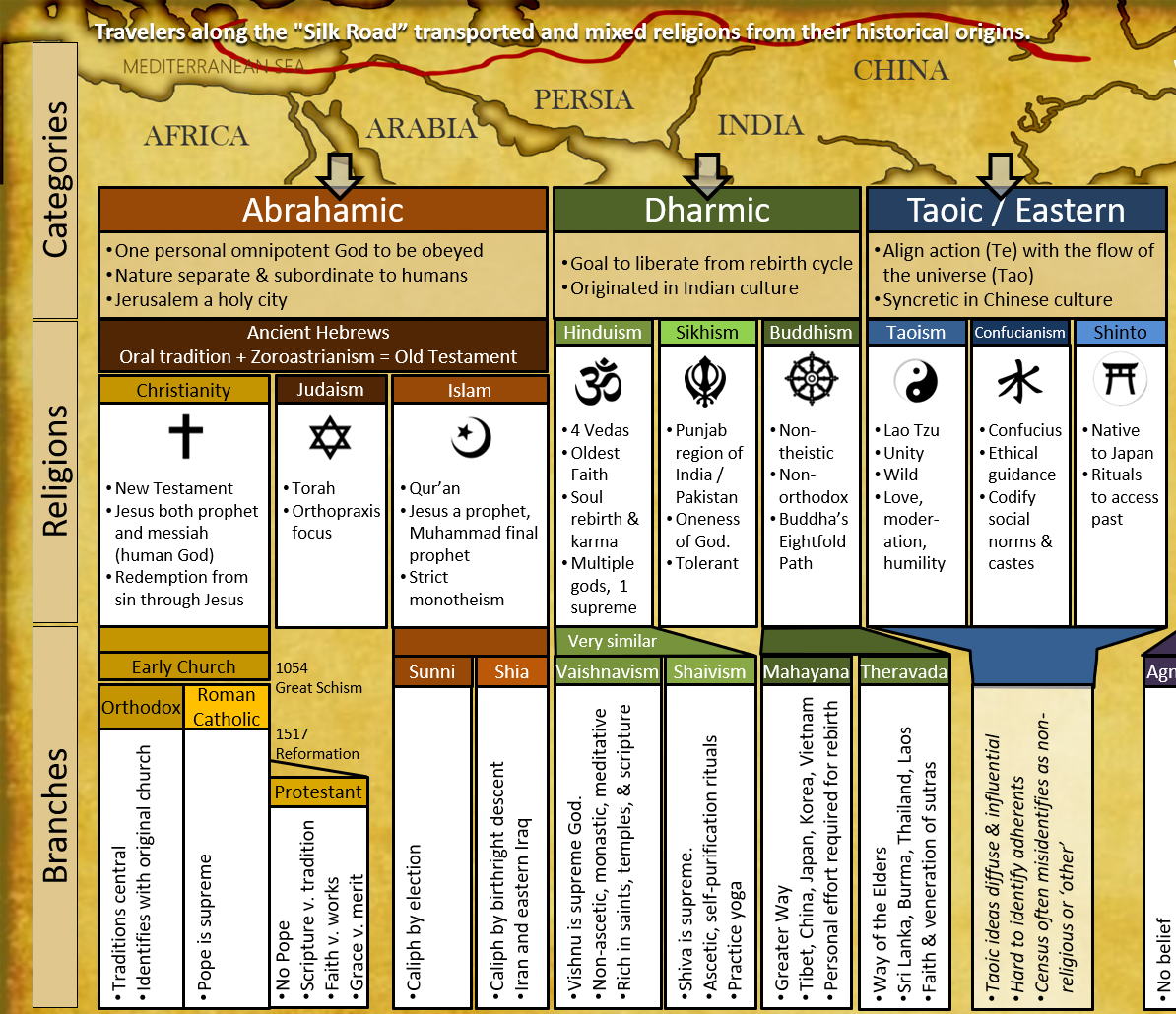
| Country | Supernatural (gods/spirit) | Ethics (society/government) | Metaphysics (big questions) |
| China | Chinese folk religion, Buddhism | Confucianism | Confucianism, Buddhism |
| Vietnam | Vietnamese folk religion, Buddhism | Confucianism | Confucianism, Buddhism |
| Korea | Korean folk religion | Confucianism | Confucianism |
| Japan | Shintoism, Buddhism | Buddhism, Confucianism | Buddhism |
I think the devs have already said that shinto is actually just Japanese BuddhismTo pull this off, I'd lean on EU4's Confucianism and Tengri mechanics to reflect how different religious traditions coexist and complement each other.
I think it’s a good idea to transplant EU4's Tengri "Secondary Religion" feature into Shinto, then set Japan's default secondary religion to Mahayana (or Japanese Buddhism—maybe even calling it something like "Butsudoism")
How is this "Three teachings" idea gonna account for the nuances they had across broader East Asia. For example, while in China, Confucianism, Taoism and Buddhism were in relative harmony from the Ming onward, Korean confucian waged opressive policies against Buddhism, destroying many Buddhist temples etc, while in Japan Confucianism was perceived secondary to Zen Buddhism.I think confucianism, chinese folk religion and taoism could just be merged for one Chinese religion (with Japan, Korea and Vietnam having access to appropriate confucian and taoist mechanics within their own religion) but otherwise the first one is first place for me and then three teachings (as long as Japan isn't given a special magic exception) second.
Edit: Also a lot of people seem to want EU4 style confucianism back, so maybe that should be included as an option.
I never said there would be perfect harmony. That didn't exist in China like you claim it did. I think there should be court influence mechanics to represent that or some sort of mechanic to represent certain sects/schools/religions being favored and disfavored overtime. It's very easy to account for these 'nuances.'How is this "Three teachings" idea gonna account for the nuances they had across broader East Asia. For example, while in China, Confucianism, Taoism and Buddhism were in relative harmony from the Ming onward, Korean confucian waged opressive policies against Buddhism, destroying many Buddhist temples etc, while in Japan Confucianism was perceived secondary to Zen Buddhism.
When you look at the clergy responsible for serving laypeople in East Asian religions (those who play a role similar to that of pastors in Christianity), you might get a very different impression compared to Christianity.Ideally, we will have a majority of Shenism, some Doaists, some Buddhists, and the small proportion of Confucianists, or just use the term "Confucianism" to label Shenism
The Joseon dynasty did not repress Buddhism as a religion, they privatised it. Basically all Joseon Emperors and even some scholar-officials were privately Buddhists and practiced the faith. What that the government at the time did was dismantle the organised aspects of Buddhist religion - the monasteries and the monks.How is this "Three teachings" idea gonna account for the nuances they had across broader East Asia. For example, while in China, Confucianism, Taoism and Buddhism were in relative harmony from the Ming onward, Korean confucian waged opressive policies against Buddhism, destroying many Buddhist temples etc, while in Japan Confucianism was perceived secondary to Zen Buddhism.
I would say that this is also true for Theravada populations.
While modern Theravada countries identify themselves as >90% Buddhist, the presence of local animist or folk religious beliefs are just as common as found in East Asia.
For example, taking a glance at a description of Burmese religion, it reads incredibly similarly to the type of description you would see of Chinese or Japanese religion:
Even in local folk religions, such as Satsana Phi (Tai folk religion), often regarded as separate "non-Buddhist" beliefs, there is a heavy influence of Buddhist ideals, festivals, or folklore. In countries such as Thailand, Cambodia, and pre-Islamic Indonesia, there is also an especially heavy influence of Hinduism into local beliefs.
I think the reason Buddhism was able to coexist with and integrate into various cultures and folk religions was summarized well by Leslie Milne in her book Shans at Home:
View attachment 1305335
In game, I think there should be a consistency between all the Buddhist regions. If East Asia has representation of syncretism then so should Southeast Asia. Additionally, one important factor needs to be consideredn - Buddhism was more influential in some regions compared to others, favoured by some governments and disliked by others, and all of this could change.
When only allowing for a single religion which represents syncretic populations, you have two options for a consistent view:
1. Local beliefs or polytheism as the primary religion in each country. "Shintoism" in Japan, "Shenism" in China, "Natism" in Burma, "Hinduism" in Cambodia and Indonesia. Buddhism would then be represented through other means, perhaps as an International Organization.
2. Buddhism as the primary religion in each country. In this method, local beliefs can be represented through country or religion mechanics, you could have a slider or societal value denoting the influence of "Local beliefs vs Orthodox Buddhist beliefs" in a country. Differences between local beliefs in each country would be indicated by the culture of a pop.
In my opinion, I find both of these options unintuitive. I think that every belief should be included separately, and their syncretism represented through high tolerance and interactions between these religions. This would obviously solve the issues with naming conventions and potentially favouring one faith/culture over another. However, the main issue with splitting them is what to do with the pops. In my view, "pops" represent communities of people rather than distinct individuals, and in this interpretation there is not really an issue with dividing a Chinese location into, say, "30% Buddhism / 70% Shenism", because it would simply be an abstract representation of the relative influence of both beliefs within that community. When pops are viewed in a more individualistic way, that division becomes difficult to make sense of and looks arbitrary and inaccurate.
Since pops require a "confessional" view of religion, both methods will be inaccurate simplification in one way or another, and someone will always find an issue with either interpretation. For the most part, I don't think there is anything inherently arbitrary about representing each faith separately compared to a single syncretic faith.
No idea why "pastoral role" is important here. When I discussed the role of the religious clergy, I placed it on the table of politics, because the so-called "pastor roles" had almost no influence in politics. As you can tell, the population that played so-called "pastor roles" was highly suppressed and so few for most of history. I don't know what experience will bring you to the conclusion that "Asian practitioners" could not have a full and meaningful religious experience within a single faith:When you look at the clergy responsible for serving laypeople in East Asian religions (those who play a role similar to that of pastors in Christianity), you might get a very different impression compared to Christianity.
As I see it, the main duties of clergy who play a “pastoral” role in the major East Asian traditions are roughly as follows:
Mahayana Buddhism
Shinto
- Conduct religious ceremonies and rituals
- Officiate believers’ life-cycle rites (this is especially common in Japan)
- Preach and pass on moral and philosophical teachings (again, more prominent in Japan)
- Offer care and support to laypeople, including charitable work
Daoism
- Conduct religious ceremonies and rituals
- Officiate believers’ life-cycle rites
Confucianism
- There are hardly any clergy who take on a pastoral role
- Most Daoist priests are monks, focused on mysticism, alchemy, and divination rather than community guidance
- Conduct religious ceremonies and rituals
- Preach and pass on moral and philosophical teachings
A Christian can usually have a full and meaningful religious experience within a single faith. But in East Asia, if someone only connects with one religion, they might not get access to the full range of spiritual or communal support.
Because of that, I’m not sure it makes sense to model China as if some people just follow Buddhism and others just follow Confucianism. The overlap and combination of traditions seem too important to leave out.
The Joseon dynasty did not repress Buddhism as a religion, they privatised it. Basically all Joseon Emperors and even some scholar-officials were privately Buddhists and practiced the faith. What that the government at the time did was dismantle the organised aspects of Buddhist religion - the monasteries and the monks.
This is very easily displayed as a suppression of organized manifestations of the Buddhist faith within a broad singular "Eastern religion", with gameplay systems to simulate the dismantlement of a current. Disregarding gameplay, having a singular "Eastern Religion" is the correct way to portray Chinese/Korean faith, any other lines being drawn among the populace are basically an arbitrary fiction.
Representing the religions as a single religion is exactly trying to escape the Christian confessional framework. Separating them into Daoism, Confucianism, Buddhism is the confessional Christian approach which cleanly separates faiths and assumes that them having different theologies implies they are different in practice and devotional following.The game is already fictitious, and I did not see why fiction could not be feasible for this part; if we could not make assumptions, all the alt-history games wouldn't work at all. You can't even make a game. Given the current design, I disagree with any claim that a single-religion system in EA will ever offer a better simulation; rather, it will oversimplify everything. Straightforward, arguing for syncretism and inseparability will only add fuel to the stereotype that the Asian religion was highly homogenous.
What I am extremely against is putting Chinese religions into the Christian confessional framework, under which Chinese religions were just a singular religion with a dubious umbrella word, e.g., "Eastern Buddhist" or "Mahayana". We could not even reach an agreement on what the name is for this "assumed religion" here. Thus, from my perspective, it is meaningless to discuss the naming convention or something similar, as we could never have reached a consensus; rather, the focus should be on designing a feasible workaround to make the system work.
Make a system. Look at how bad Islam went. If we cannot devise a feasible idea for how this system works, it will be through reselling outdated flavors. At least, we had some progress in harmonization in EU4 and acknowledged that the "Buddhism" label was not suitable for the religions. I don't really care how accurate it is if I were the dev, but rather how I can implement a feasible framework to make it sensible for everything. Make religious events reasonable. Make international connections of religions sensible. One single Asian religion could not stand because it would create events contradictory to itself.
I am not interested in arguing why Chinese religion was the same according to your sources. This is highly controversial and not persuasive to many people, making it difficult to take an intermediate stance on this issue. Even academia can't agree on this. Scholars argued for it for years. This is not what experts discussed on a pure academic basis, or "trust me, I'm an expert in that," but how people perceived themselves. And, as I pointed out, the current system did not make sense for this game. It needs improvement, rather than just changing the names. My basic idea is to make it more dynamic, more sensible for the majority.Representing the religions as a single religion is exactly trying to escape the Christian confessional framework. Separating them into Daoism, Confucianism, Buddhism is the confessional Christian approach which cleanly separates faiths and assumes that them having different theologies implies they are different in practice and devotional following.
And look, the game is trying to represent history. Representing the religions as a single religion is based on history and how academic research and scholarly analysis of religion in China categorises faith there.
Take a look into the sources I provided in the thread "Why China Should Not be Buddhist" if you want to see more about religion in China and how scholars generally conceive it and analyse it. This isn't "stereotype", its the best assessment of its manifestation.
I have to add that religion in China and its manifestation there is not unique. It is how many religion manifested themselves in environments where Abrahamic religions were not present. It is the same case with ancient Greco-Roman religion - we can't treat Neoplatonism, Stoicism, Epicureanism or the mystery cults or Mithratism or folk practices as separate religions despite the fact they all disagreed heavily with each other and had totally different theologies. They were all part of a single religious framework, much like in China.
